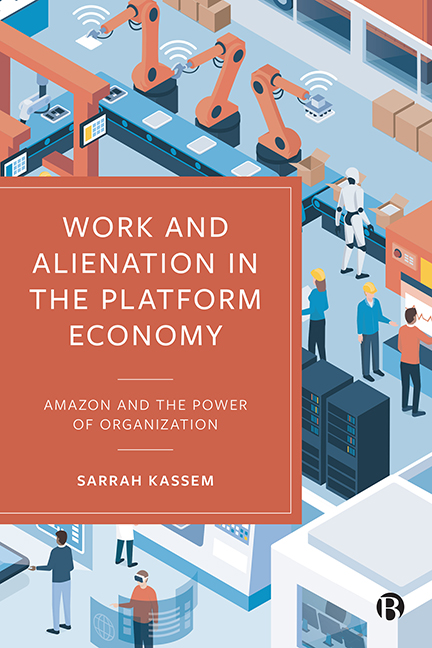7 - “I Am Not a Robot”: (Trans)national Labor Organization at the Warehouses
Published online by Cambridge University Press: 18 January 2024
Summary
Analyzing how Amazon warehouse workers are alienated explains in part labor’s (dis)organization but risks presenting a deterministic portrayal of a compliant and submissive manual workforce that Smith and Taylor portrayed. While some warehouse workers may identify with Amazon, others may be politicized, recognizing their class position and interests, to translate these ultimately, but not necessarily, into industrial action (Apicella, 2016, 2021). Both general capitalist conditions and relative conditions to the worker and labor process continuously form and reform their class consciousness, subjectivities and solidarity. Amazon warehouse workers are distributed across the globe and have their own labor histories and different relative conditions which may spark a formation or further development of class consciousness.
One of the crucial factors regardless of geographical location lies within the labor process itself and its hypertaylorized division of labor. The circulation of Amazon’s commodities only continues through the collective labor of the Inbound and Outbound workers. The nature of the platform plays a crucial role here in first facilitating the process of socialization, as workers experience the division of labor and circulation line in its physical form. Given that Amazon hires them as associates to be shifted around the circulation line, workers are aware of all the subtasks within the division of labor. Second, as the analysis of structural power in the next section indicates, the location-based nature of the warehouses facilitates the cooperation of workers derived from their assembly within the same space. It becomes their most foundational source of power. This process of socialization can, therefore, be one central condition for the development of workers’ class consciousness and solidarity.
This is intrinsically linked to workers identifying with one another in opposition to Amazon. As Amazon measures its labor force and manages them as gears in the machine, some workers insist that they are not machines; they are not defined by their Units Per Hour (UPH). In the words of one warehouse worker, “I am a human. I am not a number. I am not a robot.” Such workers are conscious of their exploitation and robotization and may resist these very conditions that alienate them.
- Type
- Chapter
- Information
- Work and Alienation in the Platform EconomyAmazon and the Power of Organization, pp. 80 - 103Publisher: Bristol University PressPrint publication year: 2023



